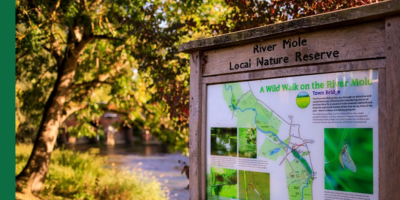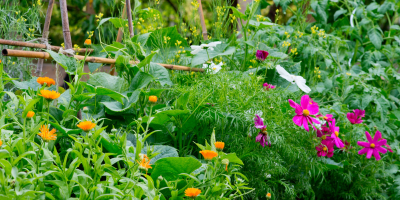Greener

Striving to become carbon neutral and maximising opportunities to ensure Mole Valley remains a highly attractive area.
We will
- Protect and enhance the natural and built environment, and ensure our areas of natural beauty and wildlife are well looked after
- Support recycling, waste reduction and measures to improve sustainability
- Promote the development of sustainable infrastructure, with a particular focus on active travel
- Build pride in Mole Valley by focusing on things such as: keeping streets clean and litter free, promoting responsible dog ownership, being tough on flytipping and supporting community volunteering
- Work towards becoming a carbon neutral organisation by 2030 while using our role as place leader to influence carbon reduction across Mole Valley
- Influence partner agencies to prevent and lessen the impact of environmental issues, focusing our efforts on water quality, air quality and flooding
Related projects

In early 2024 voluntary groups in Mole Valley had the opportunity to express interest in applying for funding for community gardens through the government’s UK Shared Prosperity Fund. Across Summer and into the Autumn of 2024, community garden volunteering days took place at Fairfield Herb Garden and a team of volunteers have been recruited for a new community garden installation in Pippbrook’s grounds.
A range of additional projects aimed at improving Mole Valley’s environment also took place including a day of clearing at Buckland Pond, a litter pick with Therfield School’s Eco Club, and several days spent on the construction, and later painting, of bee hotels which serve to provide shelter for solitary bees and other pollinators across the district.
We have declared a Climate Emergency in 2019 and pledged to work towards making our operations carbon neutral. In October 2020 we produced our Climate Change Strategy based on the following strategic objectives:
- Reducing emissions from our estate and operations
- Reducing energy consumption and emissions by promoting energy efficiency measures, sustainable construction, renewable energy sources and behaviour change
- Reducing consumption of resources, increasing recycling and reducing waste
- Supporting council services, residents and businesses to adapt to the impacts of climate change
This year we’ll be continuing our work to fulfil our commitments.
Objectives and Performance
| 2025/26 Annual Plan Objective | Cabinet Portfolio |
| To ensure that Mole Valley residents and visitors can continue to enjoy the rich and diverse countryside in the district, we will seek to increase biodiversity by; promoting areas within the District for recovery as part of the Local Nature Recovery Strategy for Surrey, identifying potential areas for biodiversity enhancement within our parks and countryside estate; and engaging with the communities to guide them on the action they can take to support this work. | Climate Change & Wellbeing / Planning |
| Carry out decarbonisation works to Dorking Halls | Climate Change & Wellbeing / Property & Projects |
| Seek grant funding to enable decarbonisation works to be carried out at Pippbrook offices | Climate Change & Wellbeing / Property & Projects |
| Explore grant funding to increase our use of solar power and other renewable energy sources | Climate Change & Wellbeing / Property & Projects |
| Work with partners to upgrade the access road to the Community Recycling Centre and waste transfer station in Leatherhead, giving customers a better experience when visiting the site | Community Services / Property & Projects |
| Implement the agreed strategic direction for the Materials Recovery Facility | Community Services / Property & Projects |
| Continue work on exploring the potential of a joint waste depot for Mole Valley and Elmbridge | Community Services |
| Implement the agreed strategy for the waste service | Community Services |
| 2025/26 Cabinet Performance Indicator | Target 2025/26 |
| Percentage of waste sent for recycling, reuse and composting | 57% |
| Household waste and recycling per person | 375 kg |
| Number of missed bins per 100,000 collections | 80 |
| Percentage of streets with acceptable levels of litter | 96% |
| Percentage of streets with acceptable levels of detritus | 92% |
| Reduction in the Council’s Carbon footprint | 1,338 tonnes |
